During the workshop by Yvonne Habbe we almost exclusively used the wool batts that she provided, they were Swedish Fine Wool, not a breed / type of wool I had encountered before and it appears not one that is widely available either. It was lovely to work with but given it’s apparent scarcity I have been experimenting with different breeds to find a suitable alternative for small sculptures. The list below is by no means exhaustive, it just represents what I had in my wool stash (even I was surprised by the range of what I found when I pulled all the bags out!).
As a point of interest all of the pieces below were made from the same resist, I think it shows how versatile this technique is, the only limit to the shapes that can be formed is my imagination….
Swedish Fine Wool
This was my control against which all the other breeds were compared.
It felted easily, making a firm felt with nice sharp folds.
Overall assessment – very good
Corriedale
Felted quickly and firmly holding 3D forms very well but not so easy to make sharp folds.
Overall assessment – moderate to good
Zwartables
This breed was a disaster. I was using raw fleece, it was incredibly difficult to lay out (I really should have scoured and carded it first) and I could not persuade it to felt. I gave up in the end. I think this wool will be nice blended with another breed but I don’t hold out any hope for 3D felt sculptures.
Overall assessment – poor
Blue Faced Leicester (BFL)
Felted easily, holding 3D shapes well and formed reasonably sharp folds
Overall assessment – good to very good
Shetland
Felted easily and made a firm felt that held the 3D shapes well but did not form sharp folds (I may have laid it out too thickly).
Overall assessment – poor to moderate
Polwarth
This was a lovely wool to work with, it felted very easily and had a softness I would normally associate with fine merino. It holds 3D shapes reasonably well but is a bit too flexible / soft for structural pieces, it formed nice sharp folds though.
Overall assessment – Good for small pieces
Merino
Moderately easy to felt, folds well but not as sharply as BFL (possibly due to needing to full further to get it to hold a 3D shape).
Overall assessment – Moderate to good
Gotland Lambswool
Little bit slow to felt, made a firm felt that held 3D forms very well and could make reasonably sharp folds. I think this wool could be used for larger structures.
Overall assessment – good to very good
Finnish
Felted easily, made nice firm shapes and reasonably sharp folds.
Overall assessment – good to excellent for larger sculptures
Jacob
Felted well and formed tight folds but not as firm / structurally strong as some of the others. Fine for smaller pieces.
Overall assessment – moderate
South American
Slow to felt, holds 3D shapes well but difficult to make sharp folds.
Overall assessment – poor to moderate
Norwegian
This wool has quite coarse fibres that were difficult to mould around the small resist, made a prefelt quite quickly but took a while to full. The finished felt is quite hairy and was difficult to form sharp folds
Overall assessment – poor
Summary
For small sculptures I think BFL is the winner with Gotland lambswool a close second. Finnish is my favourite for larger sculptures. I think special mention is due to Polwarth, this is the first time I have felted with this and it was lovely to work with, so soft and felted easily, it would be lovely for felt pieces worn next to the skin.
Obviously this is just how these wools behaved in my hands and everyone felts differently but I hope this will be a helpful reference for anyone thinking of embarking on a sculptural felt adventure 🙂



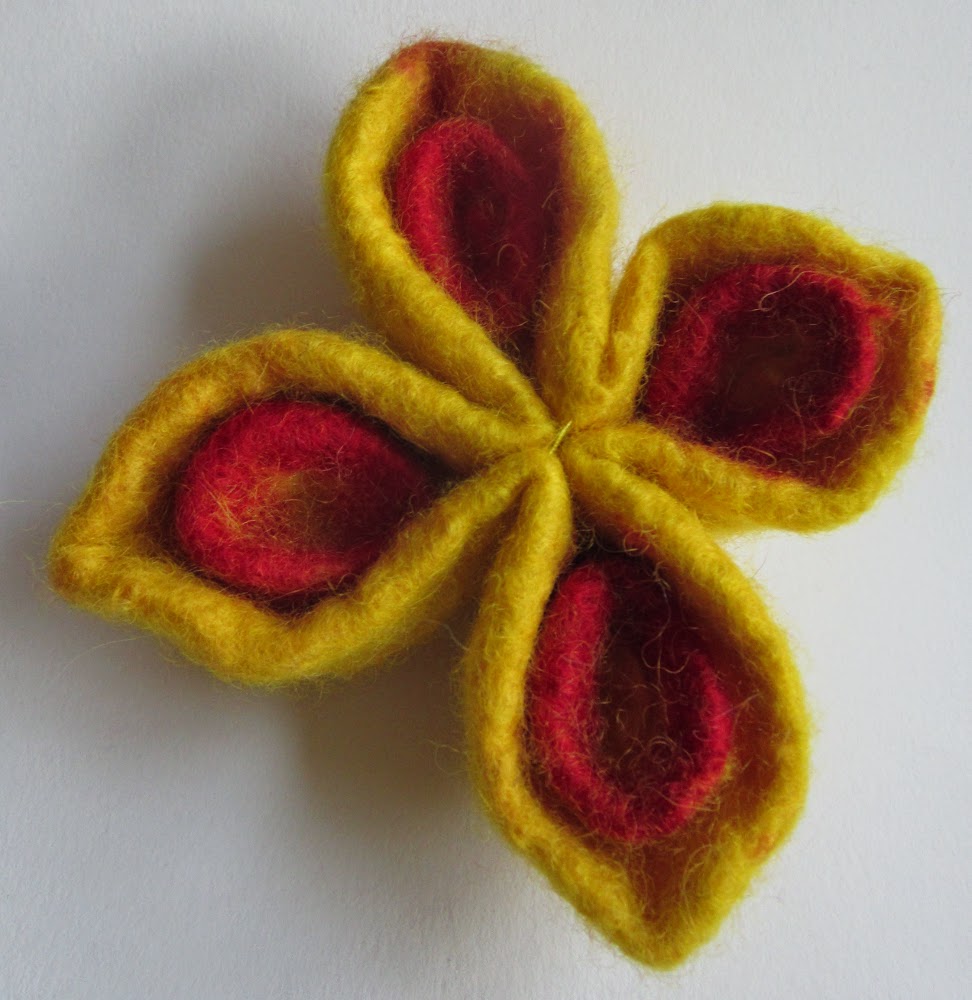
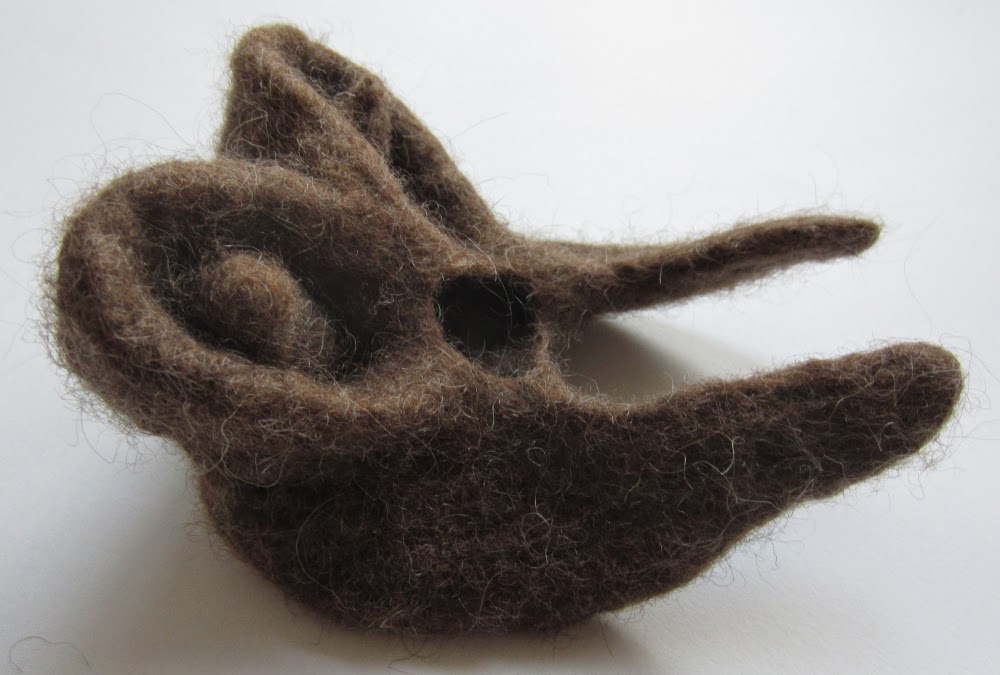


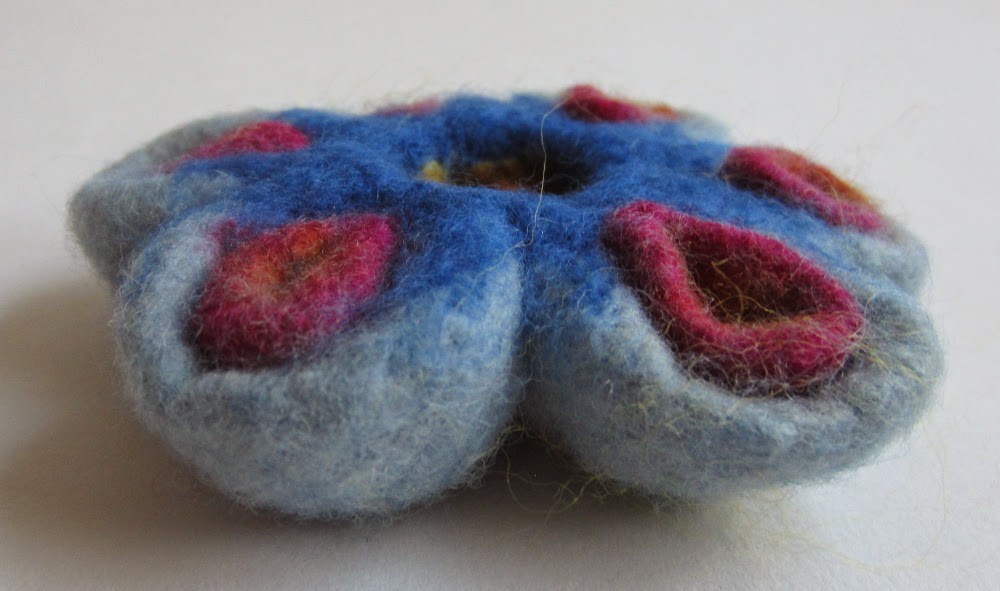

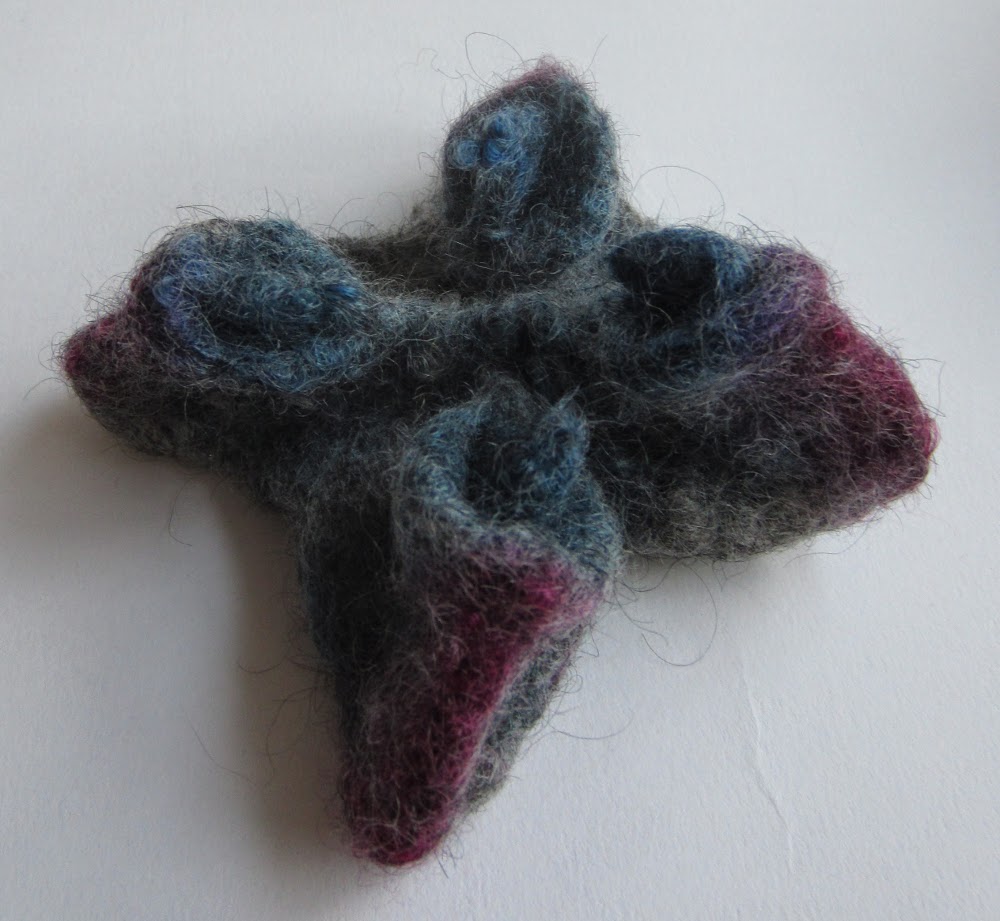



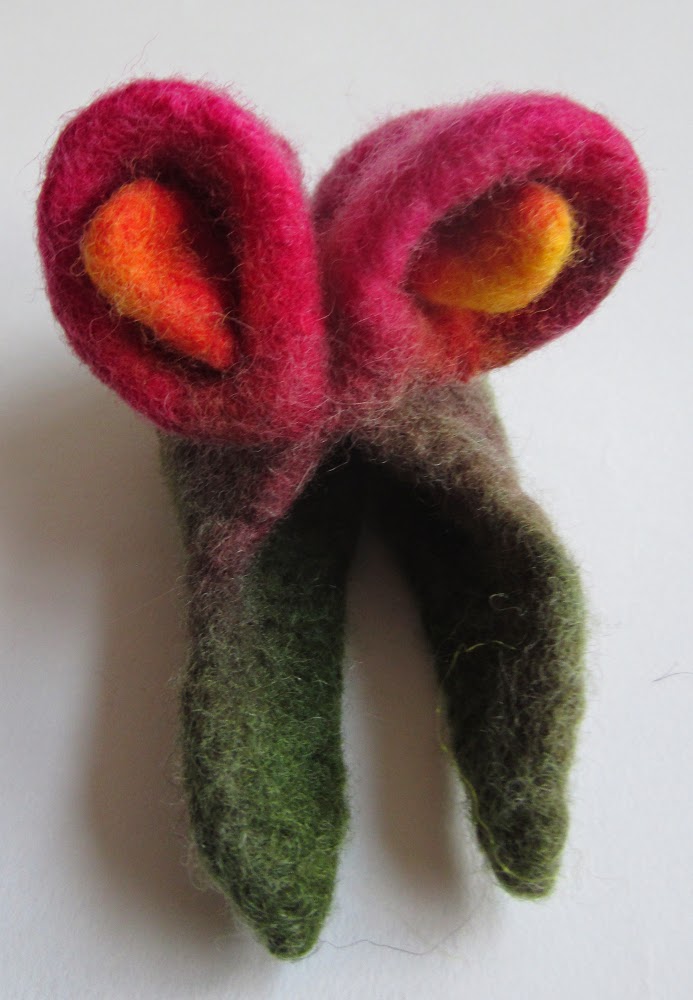
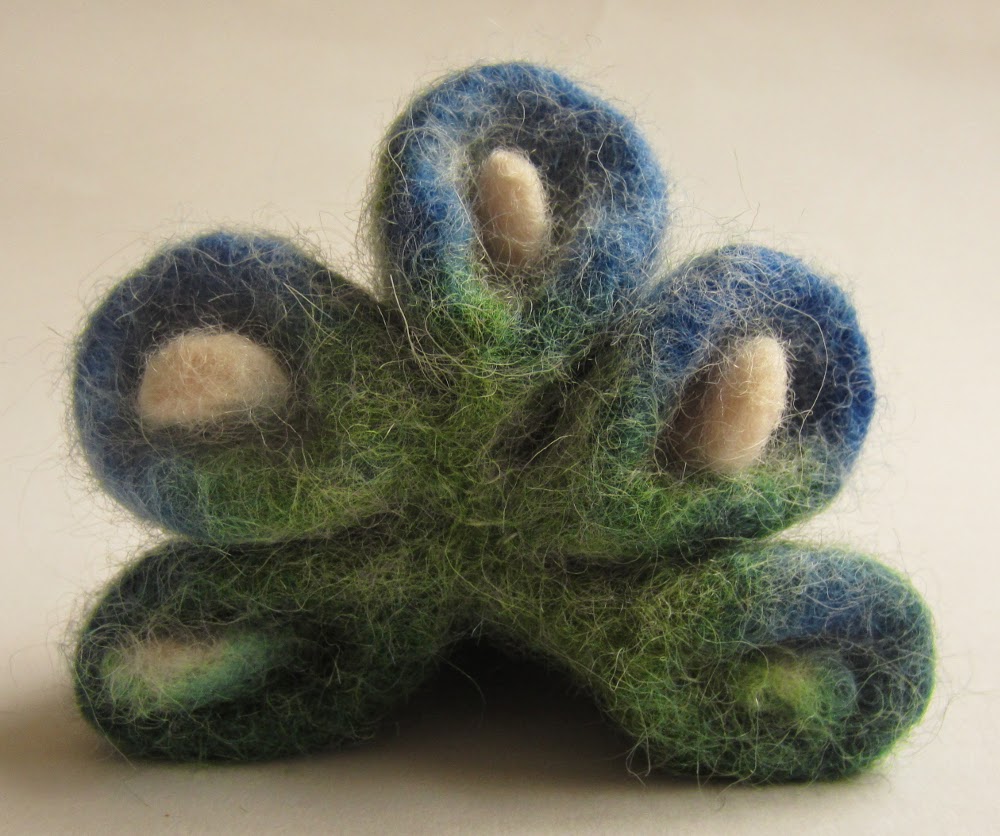
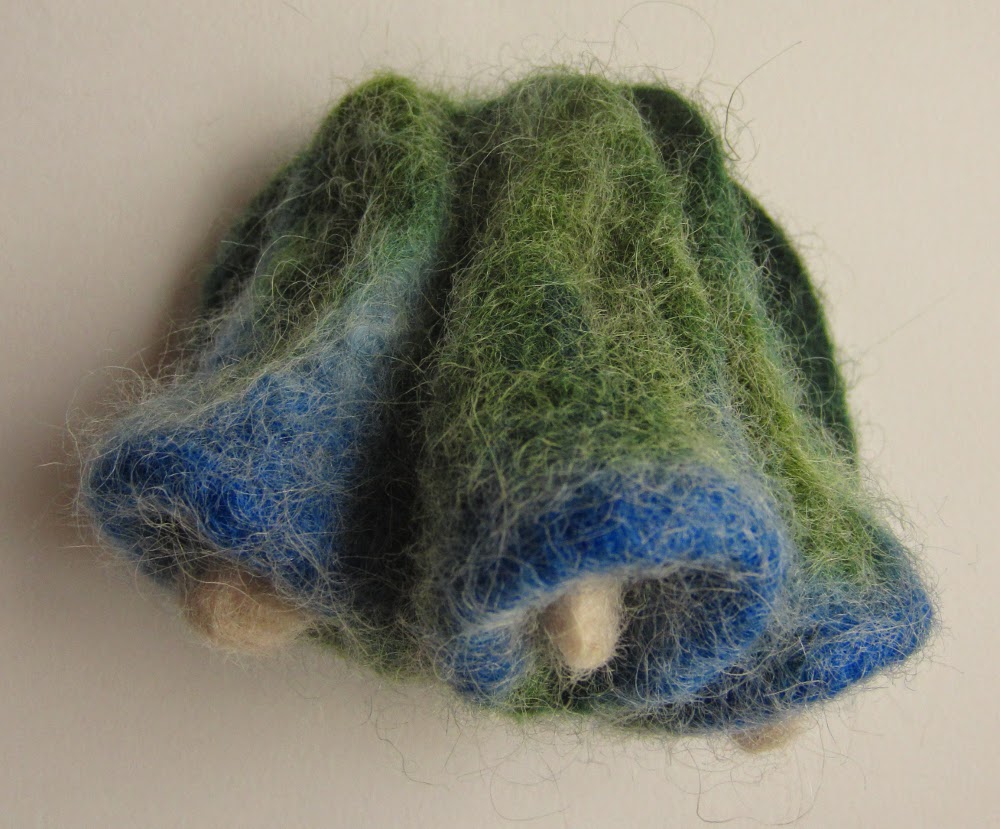
Very interesting – thank you for sharing. This will be a good reference if I ever do any felting which I do hope to try sometime. I love your work 🙂
Very interesting – thank you for sharing. This will be a good reference if I ever do any felting which I do hope to try sometime. I love your work 🙂
Great post–I don't think we have many of those wools available in the US. Liked hearing about the BFL, I saw lots of that at a fiber festival, but had no idea how it would felt. I just used some Corriedale today, thought it was really soft and easy to work with. Your sculptures are just amazing!
Great post–I don't think we have many of those wools available in the US. Liked hearing about the BFL, I saw lots of that at a fiber festival, but had no idea how it would felt. I just used some Corriedale today, thought it was really soft and easy to work with. Your sculptures are just amazing!
What a great job done! I am always confused with so many types around…
What a great job done! I am always confused with so many types around…
Wonderful post! It's good to see which breeds worked best for the sculptural effects. I'm looking forward to seeing more of your sculptures.
Wonderful post! It's good to see which breeds worked best for the sculptural effects. I'm looking forward to seeing more of your sculptures.
thank you, if you ever do give felting a go, please feel free to post a link in a comment box on my blog, I would love to see what you make.
thank you, if you ever do give felting a go, please feel free to post a link in a comment box on my blog, I would love to see what you make.
Thanks Laura, BFL is a favourite with a lot of felt-makers. I know a few people who like to use it for hats. Corriedale is another lovely breed, a bit coarser than merino or BFL but that makes it a bit more hardwearing and good for holding larger structural forms. Looking forward to reading your next post 🙂
Thanks Laura, BFL is a favourite with a lot of felt-makers. I know a few people who like to use it for hats. Corriedale is another lovely breed, a bit coarser than merino or BFL but that makes it a bit more hardwearing and good for holding larger structural forms. Looking forward to reading your next post 🙂
Thank you – me too, hence I let the scientist in me go to town and try felting with everything I could lay my hands on… ;o)
Thank you – me too, hence I let the scientist in me go to town and try felting with everything I could lay my hands on… ;o)
Thanks Ruth, I found lots of blogs that discussed how well different breeds felt but they were all on flat pieces so I thought I had better make a post of my own, it's been a lot of work but there have (for me) been some interesting results, I expected the coarser breeds to come out on top, but while they held 3D shapes really well they refused to form sharp folds. I love that I am still learning so much about felt making 🙂
Thanks Ruth, I found lots of blogs that discussed how well different breeds felt but they were all on flat pieces so I thought I had better make a post of my own, it's been a lot of work but there have (for me) been some interesting results, I expected the coarser breeds to come out on top, but while they held 3D shapes really well they refused to form sharp folds. I love that I am still learning so much about felt making 🙂
I love all this analysis and you definitely need to choose the right fibre for your project. What a good record you have made. Looking forward to seeing some BFL Sculptures
I love all this analysis and you definitely need to choose the right fibre for your project. What a good record you have made. Looking forward to seeing some BFL Sculptures
Thanks for sharing your findings – and I love your sculptures. I particularly liked the pomegranate brooch you made.
Thanks for sharing your findings – and I love your sculptures. I particularly liked the pomegranate brooch you made.
Thank you Jane… I need to order some more BFL! 🙂
Thank you Jane… I need to order some more BFL! 🙂
Thank you 🙂
Thank you 🙂
Teri,
Thank you for being so thorough in your explorations coarser felting fiber. Your samples for sculptures demonstrate the features that I would look for for hats (but would not have been able to put into words). Additionally, I tend not to sample, which is risky with 'new' fibers. Also, have had Zwartables fail (and had read that it should have felted — but no). As a result, I stick to Merino for hats, with a layer of Finn, Gotland or Norwegian when a bit more surface interest is needed.
Your method of using one fiber at a time is a truer test of a fiber''s qualities. thanks again!
Thanks for a very interesting and informative post! As I am Swedish, I’m pleased to hear that you like working with Swedish fine wool (Finull). 🙂 It was very interesting to read your evaluation of all these different breeds in terms of suitability for sculptural felting. Different types of wool definitely have different best uses.